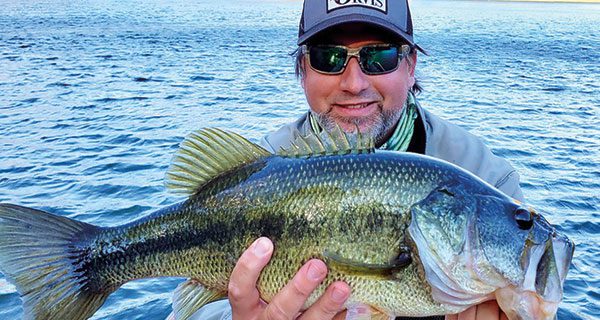When finding feeding bass, critical thinking must be applied. Most anglers know where to search for bass at any given time, based off of water temperatures and time of year. New anglers trying to learn this skill can have some challenges ahead. The most important thing to learn about bass fishing, other than the fundamentals, is where they are. It doesn’t matter how good your technique is, or the quality of gear you brought with you; if you can’t place your lure in front of the fish, you are not going to catch anything.
Today you have so many resources to pull information from. With technology, such as satellite imagery and streaming data, it is so easy to educate yourself. The two sources that come to mind would be Google earth and YouTube. YouTube can give you information that is current and related to your area. Learning from other anglers is a good way to look for problem solving from different s of view. It has basically created a shortcut to the learning process. You can use Google Earth and plug in the information that you currently know, such as water temperatures and time of year. Searching on a current topical map of the lake you choose can show if the water is high or low. Maps from past dates can also reveal features on the bottom, when the water was really low.
Big bass do different things than smaller bass do this time of year. Remember, small bass like to chase shad while big bass are lazy and like to position themselves under smaller bass to pick up scraps that the small bass leave behind. It is easy to choose quality or quantity based off of this information. If you choose a shad presentation, you can fish deep with baits like blade baits, spoons, jigs, and lipless cranks. You can get the chasing bass by fishing the upper water column. Baits, like top water baits and jerk baits, will give you great results for these types of bass.
In the fall, bass will follow the shad to the backs of the creeks. They will position themselves in places where they can corral and ambush shad. Bass become very efficient feeders the older they get. Look for secondary points, pinch points, and pockets where they corral shad and pan fish. In the morning hours, the location of active bass will be easier to spot as bass will blow up on the surface when feeding on shad in open water. If you see that the water has been drawn back, bass will be in the deeper water offshore.
This time of year is a fun time to get out and catch loads of fish, much like it is in the spring. The use of these resources will speed up the process and help with eliminating problems. Enjoy the fall because it won’t last long with winter around the corner.
Scott Norton is a Western North Carolina native. Born in Asheville, N.C., he is a long-time hunter, angler and weekend warrior. He is a member of Southern Raft Supply’s prostaff, representing them in his Jackson Kayak Coosa FD.
